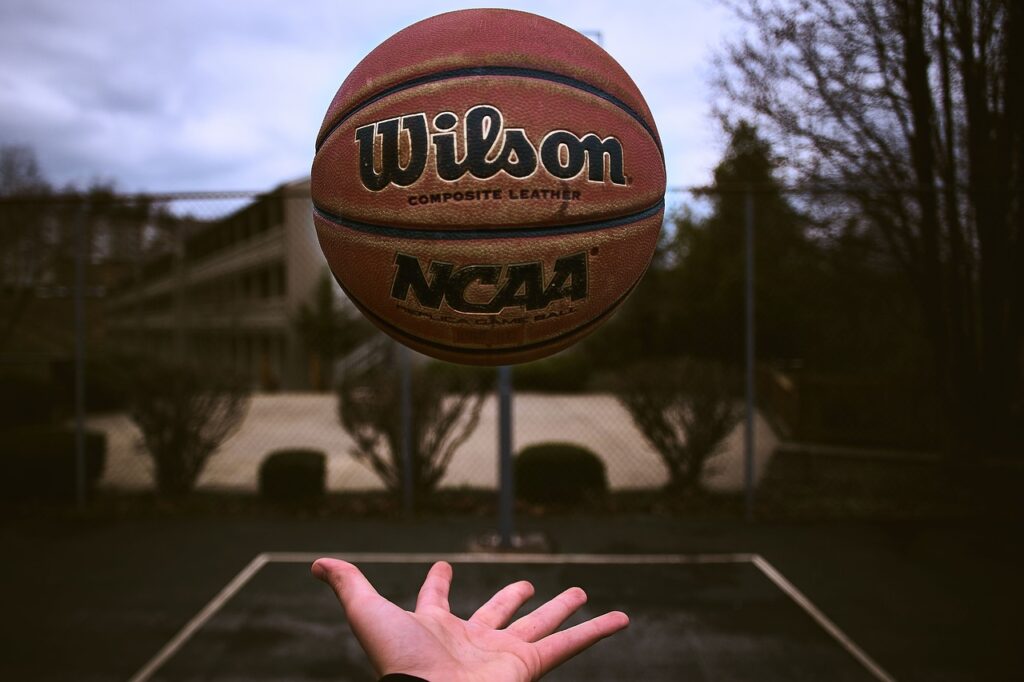
As fans strive to fill out March Madness brackets, technology contributes, in the inner workings, to improve the industry. We see its impacts in wearable technology, motion sensors, mobile platforms, and even March Madness lines. Undoubtedly, the adaptation of technology in the NCAA is driving milestones in leaps and bounds.
Before now, box scores featured basic statistics like assists, points, and rebounds. It wasn’t until recently that they featured shooting percentages or even percentages, so stats like blocks and steals haven’t been here for long. Today, however, fans enjoy an enormous amount of detailed in-game data, making March Madness a more interesting event.
Read on as we explore the numerous ways that technology has helped to improve the March Madness industry.
Improved Player Data
Technology’s influence on fan experience portrays an innovative approach to college basketball. It provides in-depth game stats, allowing fans to fully grasp the details of the game and enhancing their experience.
Also, technology has enabled college teams to integrate job roles like data scientists, technicians, and statistical analysts. These people have a vital role to play in every game, as they zone in on details like a player’s passes, shots, steals, and many more. With the data, these specialists create databases that reflect players’ play trends, shedding more light on their patterns and strategies. Fans and bettors can use these strategies to predict accurate outcomes and win money.
The NCAA borrows a leaf from the NBA’s tactics, as we expect the league to integrate artificial intelligence, machine learning, and automated referee systems. We may also see player-tracking cameras to monitor player movements aerially and sensor-containing balls to analyze dribbling, handling, and shooting preferences.
Knowing these patterns can dramatically benefit scouting and recruiting, and as they provide a more detailed analysis, It also helps build stronger teams by informing coaches about formidable matches. For instance, a player’s analysis can help determine how well he would do in a team scenario.
Better March Madness Fan Experience
Fans are an essential component of any sport. They form the audience and essentially the “consumer.” For fans who can only support their favorite teams from home, technology can enable platforms to provide multi-game streaming so that fans can watch multiple games simultaneously. For instance, Turner Sports and CBS offered intelligent RailCam and SkyCam systems in 2021. In addition, it helps provide multiple camera perspectives on the live action.
The NCAA app and site offer unique features like the virtual shot clock and hype wall that centers March Madness catchphrases.
Improving Jump Shots and Drives
A powerful jump shot is essential to landing the ball in the hoop, and technology is proving to assist that area. For instance, the HomeCourt app uses artificial intelligence and machine learning to enhance players’ jumping. In addition, since they only require a smartphone, coaches can use even the game’s top stars and new players.
The app highlights details that the naked eye can’t see, and players receive metrics like reaction time and launch angle and adjust accordingly. In addition, the technology has several benefits outside the sports world, enabling artificial vision to recognize any objects on the road and avoid them.
Improved Officiating
The NCAA introduced the Precision Time System to officials to better sync the game. The average delay between an official’s call and the scorekeeper’s move is 0.7 seconds, and reports say that these lost seconds can add a valuable 30 seconds to the game.
Today, instead of whistling, the official wears a microphone that connects to his belt’s microprocessor. The whistle sound triggers the processor and sends a signal to a station connecting to the game clock.
Today, technology has helped NCAA teams access massive amounts of data at their fingerprints. As March Madness adapts to tracking features and modern technology, it has become more engaging and exciting for fans. Whether on the court or at home supporting your favorite team, technology has helped turn March Madness into a more entertaining event.